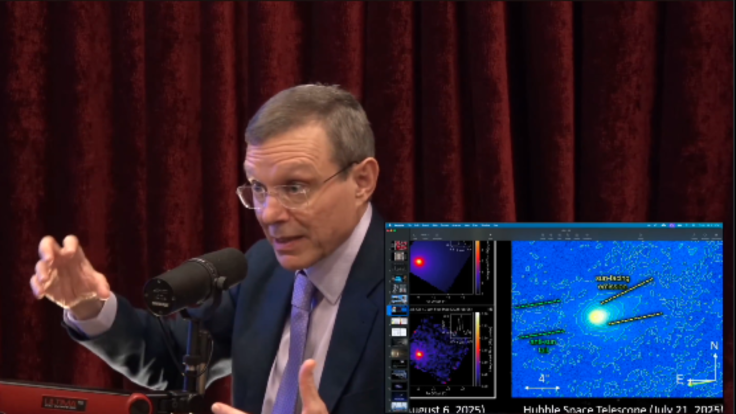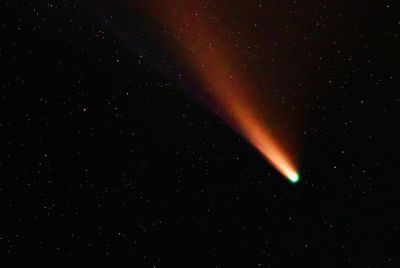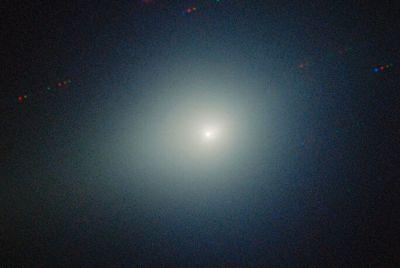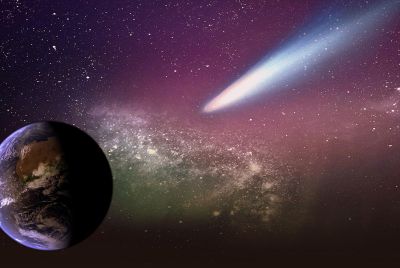Avi Loeb Claims NASA Hid 3I/ATLAS Mars Image—'You Don't See a Cometary Tail'
Loeb's remarks have reignited online debate over NASA's data transparency as scientists dispute his interpretation of the alleged missing tail in the Mars flyby image.

Harvard astrophysicist Avi Loeb has alleged that NASA withheld an image of the interstellar comet 3I/ATLAS taken near Mars earlier this month. Loeb made the claim during an appearance on The Joe Rogan Experience on 29 October 2025, and repeated it in a post on X.
According to Loeb, NASA's HiRISE camera aboard the Mars Reconnaissance Orbiter 'captured 3I/ATLAS on 2 October near Mars,' but the image 'was never released.' He said he formally requested the data from NASA and received no response, suggesting the omission deserved scrutiny. As of now, NASA has not confirmed any such capture or withheld image.
🚨 Avi Loeb on 3I/ $ATLAS @joerogan OUT NOW!
— $Atlas CTO (@Atlas__CTO) October 28, 2025
“The Sun-Dacing Emission is Elongated. You Don’t See a Cometary Tail Here.”
Loeb says NASA’s HiRISE camera captured 3I/ $ATLAS on Oct 2 near Mars... but The Image Was Never Released.
He requested the Data from @NASA but No… pic.twitter.com/Y9OiUx2D2c
What Loeb Alleges

In his interview and accompanying social media post, Loeb described the object's 'sun-facing emission' as elongated and jet-like, claiming that 'you don't see a cometary tail here.' He argued that the shape and direction of the emission could point toward a non-standard physical process, or even an engineered source, rather than natural cometary behaviour.
Loeb also stated that 3I/ATLAS the third confirmed interstellar object after ʻOumuamua and 2I/Borisov appeared to be 'a million times more massive' than ʻOumuamua and followed a retrograde path aligned within a few degrees of the Solar System's planetary plane.
He suggested that such a trajectory might indicate 'targeting' of the inner Solar System, a view that other astronomers have dismissed as speculative.
The astrophysicist, who heads Harvard's Galileo Project, argued that potential 'technological' signatures in space should be investigated rather than dismissed. On Rogan's programme, he compared the need for vigilance to intelligence failures before rare, high-impact events urging that scientists treat anomalies seriously even if they seem improbable.
Evidence and Interpretation
Loeb referenced an elongated glow seen in a Hubble Space Telescope image of 3I/ATLAS, which he interpreted as a jet directed toward the Sun rather than a tail pushed away by solar radiation.
After adjusting for geometry, he estimated the feature to be 'ten times longer than wide,' inconsistent, he said, with standard comet models.
He also cited spectroscopic data reported by observing teams that detected nickel with little or no iron in the object's emissions.
According to Loeb, such a nickel-to-iron ratio resembles industrial alloys used in aerospace applications, though other researchers say the results can be explained by natural chemical pathways.
NASA and the European Space Agency continue to describe 3I/ATLAS as a natural interstellar comet, with no verified evidence of artificial origin.
What Remains Unverified
Loeb's claim that NASA's HiRISE instrument imaged 3I/ATLAS on 2 October remains unconfirmed. There is no public record or release of Mars-based imagery showing the comet, and NASA has not commented on the alleged data request.
His assertions about a 'sunward jet,' industrial-like composition, and deliberate trajectory are his interpretations of existing data, not consensus science.
Experts note that extraordinary claims require independent verification. Live Science and The Guardian have both reported that while 3I/ATLAS displays some unusual features, mainstream astronomers view them as within the range of natural phenomena for interstellar objects.
Until additional data from NASA or peer-reviewed studies emerge, Loeb's HiRISE allegation and his broader claim of a suppressed image remain unverified.
© Copyright IBTimes 2025. All rights reserved.




















